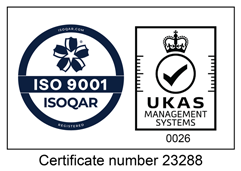Regulation of telecommunications is not, as some operators may feel, a chance to hold back progress. At least it shouldn’t be.
Then again, there have been many examples that, if they became the norm, would genuinely give telecommunications regulation a bad name. Exorbitant spectrum pricing, capricious taxation, slow or bureaucratic approval regimes, uneconomic coverage obligations, fear of public opposition and underqualified regulatory staff would probably head a few lists.
But with hyperdense small cell rollout, asset sharing, rural coverage, indoor communications and, inevitably, 5G spectrum auctions already part of the regulatory conversation, what should we expect, or at least hope for, from a progressive regulation regime?
Firstly, that the mistakes of 3G should be guarded against. Astronomical 3G spectrum prices undermined rollouts. Many regulators, thankfully, are aware that 5G is much more uncertain as a business model however some governments are still overestimating the worth of spectrum assets. For example, in India there have been tussles between different vested interests about the need (or not) of setting base prices for 5G spectrum (these discussions continue and will for some time as the auction is again on hold).
Taxation is another issue. The mobile communications industry, including genuinely transformative services like mobile money, is heavily taxed, especially in many developing and emerging economies, undermining the benefits of social inclusion and internet access and stifling economic growth. Taxation burdens can be applied to incentivise beneficial outcomes for the economy – such as mobile coverage performance.
The good news is that regulators in places as diverse as the US, China, Brazil, Malaysia, Vietnam and Zimbabwe are often making asset sharing easier. Combined with a genuine desire to enable rollout as densification takes place, this could speed 5G delivery both indoors and out and boost industries that will be relying on IoT and mobile broadband.
And of course remote connectivity is something regulators want to encourage and operators to manage as cost-effectively as possible. Here regulators can support not just hybrid access networks and satellite backhaul but innovative HAPS initiatives like Loon and Avealto.
Regulation involves local as well as national authorities, however. Local objections to Wi-Fi, IoT and small cells could make smart cities a distant prospect if regulators and operators don’t plan properly.
As advisors to both regulators and operators, Real Wireless would support regulation that is timely, light touch, informed, enabling and thorough – but also transparent and clear about its intentions. While the recent spread of false information about 5G is dispiriting, it is also a reminder that a supply of clear, easily accessible messages does a lot to make people feel their concerns are being addressed.
So what is progressive regulation in practice? Well, a good example was the decision last year by Austria’s Regulatory Authority for Broadcasting and Telecommunications (RTR) to establish an investment-friendly framework for its 5G spectrum auctions: more than 20-year licences, a reserve price for spectrum in the 700 MHz, 1500 MHz and 2100 MHz bands totalling €295 million, and a liberal sharing framework.
Our role in advising RTR was to look at coverage obligations and the costs that might be incurred. The resulting framework – a pragmatic approach to the auction of spectrum combined with a realistic analysis of coverage costs – was well received by all involved and could allow new 5G-led businesses to flourish in Austria, with all the wider economic benefits that implies. Will it set an example that other regulators might want to imitate?
Regulators that are well informed about emerging technologies, and the strengths and weaknesses, will likely take more balanced decisions on how to regulate technology driven markets. Ofcom recently benefited from our technology horizon scanning service; Real Wireless was commissioned to look forward five years to survey terrestrial and non-terrestrial connectivity technologies.
This type of horizon scanning is key to allow regulators to focus on those new technologies, still in the ‘back rooms’, that are likely to bring evolutionary or revolutionary change to the markets that regulators oversee.
















